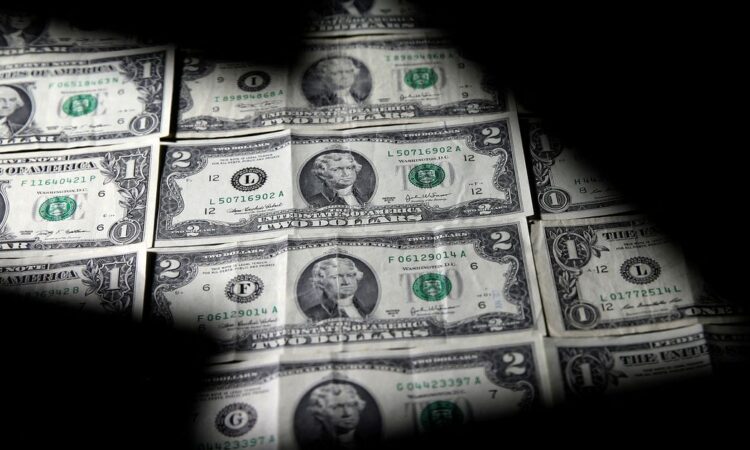
SINGAPORE, April 14 (Reuters) – The dollar index bounced off a one-year low against a basket of currencies on Friday after some March retail sales components were not as weak as some economists had feared, while a key Federal Reserve official warned that the U.S. central bank needs to continue hiking interest rates to bring down inflation.
The dollar rebounded from an initial drop after data showed U.S. retail sales fell more than expected in March as consumers cut back on purchases of motor vehicles and other big-ticket items.
Core retail sales, which correspond most closely with the consumer spending component of gross domestic product, slipped 0.3% last month. However, despite March’s fall, the gains in January and February put consumer spending firmly on track to accelerate in the first quarter.
“It was generally on the weak side with the exception of the retail sales control group, which is super core retail sales, it was just a little less negative than expected and makes you think that maybe the market was looking for something much weaker,” said Mazen Issa, senior foreign exchange strategist at TD Securities in New York.
Economists noted that in the context of a very strong January, the data still reflects a strong quarter.
“Personal consumption flattened out in February and March, but this followed a huge jump in spending momentum in January,” Jefferies money market economist Thomas Simons said in a note. “The bottom line is that the weakness in February and March looks distressing in isolation, but the quarterly averages are much stronger due to the spending spree in January.”
The dollar index gained 0.57% on the day at 101.53, after falling to 100.78, the lowest since last April. It remains on track for its fifth consecutive down week.
The euro fell 0.44% to $1.0999 after hitting $1.10755, the highest since last April. The dollar gained 0.91% against the Japanese yen to 133.78.
Investors are pricing in the probability that the Fed will need to cut rates later this year on an expected slowdown but the economy remains relatively strong, making trading choppy.
“The overarching theme is you’re getting a slowdown,” said Issa. “I think what gets overlooked is it may take longer for things to unfold, maybe a grind, and the U.S. economy is more resilient than people have given it credit for.”
Other data on Friday showed U.S. consumer sentiment inched up in April, but households expected inflation to rise over the next 12 months. Production at U.S. factories also fell more than expected in March, but eked out a modest gain in the first quarter.
Fed Governor Christopher Waller said on Friday that despite a year of aggressive rate increases, U.S. central bankers “haven’t made much progress” in returning inflation to their 2% target and need to move rates higher still.
Atlanta Fed President Raphael Bostic, meanwhile, said one more quarter-percentage-point interest rate hike can allow the Fed to end its tightening cycle with some confidence that inflation will steadily return to its 2% target.
Chicago Fed President Austan Goolsbee also said that a U.S. recession is certainly feasible as the Fed’s steep rate-hikes over the past year filters fully through the economy.
Fed funds futures traders are pricing in an 81% probability that the Fed will hike by an additional 25 basis points at its May 2-3 meeting.
========================================================
Currency bid prices at 3:00PM (1900 GMT)
Reporting by Rae Wee; Editing by Christopher Cushing
Our Standards: The Thomson Reuters Trust Principles.




